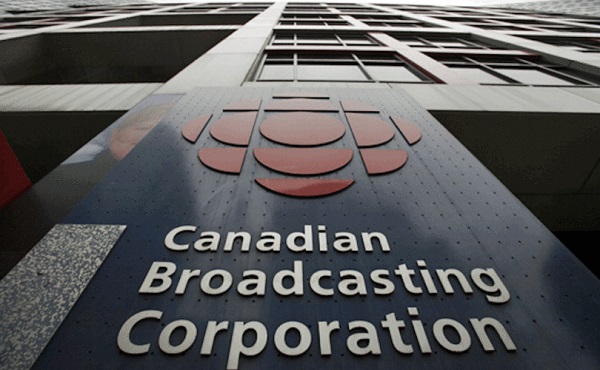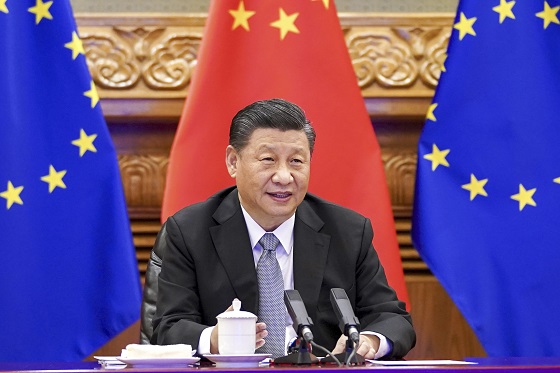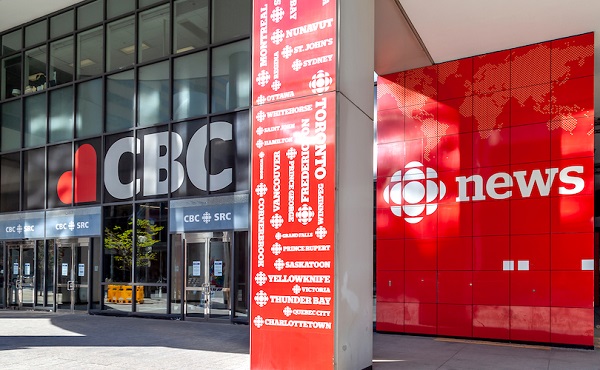Business
The CBC gets $1.4 billion per year, but the Trudeau government wants to give it more

From LifeSiteNews
A Heritage Committee report is recommending “that the Government of Canada provide a substantial and lasting increase in the parliamentary appropriation for CBC, allowing it to eliminate its paid subscription services and gradually end its reliance on commercial advertising revenues.”
The Liberal-run Heritage Committee is demanding millions more in funding for the Canadian Broadcasting Corporation despite the fact it already gets roughly $1.4 billon from the government annually.
According to information obtained and published December 16 by Blacklock’s Reporter, a Heritage Committee report is recommending “that the Government of Canada provide a substantial and lasting increase in the parliamentary appropriation for CBC, allowing it to eliminate its paid subscription services and gradually end its reliance on commercial advertising revenues.”
While the report did not suggest an amount, CBC CEO Catherine Tait previously testified that the outlet required funding in the “$400 million to $500 million range.”
While the report suggested throwing more taxpayer dollars at the failing outlet, Conservatives wrote a dissenting report, arguing the media platform should be defunded.
“The CBC cut hundreds of jobs while awarding lavish bonuses,” Conservative MP Kevin Waugh said, referencing CBC managers taking $14.9 million in bonuses this year while cutting 346 jobs.
“This disgraceful abuse of taxpayer dollars when Canadians are struggling for financial survival has contributed to the ‘defund the CBC’ movement,” he continued.
Waugh’s comments echo those of Canadian Taxpayer Federation Alberta director Kris Sims, who called on Parliament to abolish all taxpayer funding to the CBC, arguing that propping up the media outlet is not only a waste of money but also creates a conflict of interest for journalists.
Indeed, not only has the CBC’s network audience plummeted, but many have pointed out that the outlet has become nothing more than a mouthpiece for Prime Minister Justin Trudeau’s government.
“A free press means journalists free from government,” Sims explained. “A journalist who is paid by the government is in a direct conflict of interest. You cannot hold the powerful government to account when you’re counting on the powerful government for your paycheck.”
In seeming confirmation of Sims’ concerns, in October, Liberal Heritage Minister Pascale St-Onge’s department admitted that federally funded media outlets buy “social cohesion.”
Additionally, in September, House leader Karina Gould directed mainstream media reporters to “scrutinize” Conservative Party leader Pierre Poilievre, who has repeatedly condemned government-funded media as an arm of the Liberals.
Gould’s comments were in reference to Poilievre’s promise to defund the CBC if elected prime minister. Poilievre is a longtime critic of government-funded media, especially the CBC.
There have also been multiple instances of the CBC pushing what appears to be ideological content, including the creation of pro-LGBT material for kids, tacitly endorsing the gender mutilation of children, promoting euthanasia, and even seeming to justify the burning of mostly Catholic churches throughout the country.
Despite this, beginning in 2019, Parliament changed the Income Tax Act to give yearly rebates of 25 percent for each news employee in cabinet-approved media outlets earning up to $55,000 a year to a maximum of $13,750.
The Canadian Heritage Department since admitted that the payouts are not even sufficient to keep legacy media outlets running and recommended that the rebates be doubled to a maximum of $29,750 annually.
Last November, Trudeau again announced increased payouts for legacy media outlets that coincide with the leadup to the 2025 election. The subsidies are expected to cost taxpayers $129 million over the next five years.
Similarly, Trudeau’s 2024 budget earmarked $42 million in increased funding for the CBC in 2024-25.
Business
Trump considers $5K bonus for moms to increase birthrate

 MxM News
MxM News
Quick Hit:
President Trump voiced support Tuesday for a $5,000 cash bonus for new mothers, as his administration weighs policies to counter the country’s declining birthrate. The idea is part of a broader push to promote family growth and revive the American family structure.
Key Details:
- Trump said a reported “baby bonus” plan “sounds like a good idea to me” during an Oval Office interview.
- Proposals under consideration include a $5,000 birth bonus, prioritizing Fulbright scholarships for parents, and fertility education programs.
- U.S. birthrates hit a 44-year low in 2023, with fewer than 3.6 million babies born.
Diving Deeper:
President Donald Trump signaled his support Tuesday for offering financial incentives to new mothers, including a potential $5,000 cash bonus for each child born, as part of an effort to reverse America’s falling birthrate. “Sounds like a good idea to me,” Trump told The New York Post in response to reports his administration is exploring such measures.
The discussions highlight growing concern among Trump administration officials and allies about the long-term implications of declining fertility and family formation in the United States. According to the report, administration aides have been consulting with pro-family advocates and policy experts to brainstorm solutions aimed at encouraging larger families.
Among the proposals: a $5,000 direct payment to new mothers, allocating 30% of all Fulbright scholarships to married applicants or those with children, and launching federally supported fertility education programs for women. One such program would educate women on their ovulation cycles to help them better understand their reproductive health and increase their chances of conceiving.
The concern stems from sharp demographic shifts. The number of babies born in the U.S. fell to just under 3.6 million in 2023—down 76,000 from 2022 and the lowest figure since 1979. The average American family now has fewer than two children, a dramatic drop from the once-common “2.5 children” norm.
Though the birthrate briefly rose from 2021 to 2022, that bump appears to have been temporary. Additionally, the age of motherhood is trending older, with fewer teens and young women having children, while more women in their 30s and 40s are giving birth.
White House Press Secretary Karoline Leavitt underscored the administration’s commitment to families, saying, “The President wants America to be a country where all children can safely grow up and achieve the American dream.” Leavitt, herself a mother, added, “I am proud to work for a president who is taking significant action to leave a better country for the next generation.”
Business
Trump: China’s tariffs to “come down substantially” after negotiations with Xi

 MxM News
MxM News
Quick Hit:
President Trump said the 145% tariff rate on Chinese imports will drop significantly once a deal is struck with Chinese President Xi Jinping, expressing confidence that a new agreement is on the horizon.
Key Details:
- Trump said the current 145% tariff rate on China “won’t be anywhere near that high” after negotiations.
- He pointed to his relationship with Xi Jinping as a reason for optimism.
- The White House said it is preparing the groundwork for a deal, and Treasury officials expect a “de-escalation” of the trade war.
Diving Deeper:
President Donald Trump on Tuesday told reporters that the steep tariff rate currently imposed on Chinese imports will come down substantially after his administration finalizes a new trade deal with Chinese President Xi Jinping. While the current level stands at 145%, Trump made clear that number was temporary and would be adjusted following talks with Beijing.
“145 percent is very high. It won’t be that high, it’s not going to be that high … it won’t be anywhere near that high,” Trump said from the Oval Office, signaling a shift once a bilateral agreement is reached. “It will come down substantially, but it won’t be zero.”
The tariff, which Trump previously described as “reciprocal,” was maintained on China even after he delayed similar penalties on other trading partners. Those were cut to 10% and paused for 90 days to allow room for further negotiation.
“We’re going to be very nice. They’re going to be very nice, and we’ll see what happens. But ultimately, they have to make a deal because otherwise they’re not going to be able to deal in the United States,” Trump said, reinforcing his view that the U.S. holds the leverage.
Trump’s remarks come as markets remain wary of ongoing trade tensions, though the White House signaled progress, saying it is “setting the stage for a deal with China.” The president cited his personal rapport with Xi Jinping as a key factor in his confidence that an agreement can be reached.
“China was taking us for a ride, and it’s not going to happen,” Trump said. “They would make billions a year off us and build up their military with our money. That’s over. But we’ll still be good to China, and I think we’ll work together.”
Treasury Secretary Scott Bessent also said Tuesday that he expects a cooling of trade hostilities between the two nations, according to several reports from a private meeting with investors.
As the 90-day pause on other reciprocal tariffs nears its end, Trump emphasized that his team is prepared to finalize deals quickly. “We’ve been in talks with many, many world leaders,” he said, expressing confidence that talks will “go pretty quickly.”
White House Press Secretary Karoline Leavitt added that the administration has received 18 formal proposals from other countries engaged in trade negotiations, another sign that momentum is building behind Trump’s broader push to restructure global trade in favor of American workers and businesses.
(Li Xueren/Xinhua via AP)
-

 2025 Federal Election2 days ago
2025 Federal Election2 days agoOttawa Confirms China interfering with 2025 federal election: Beijing Seeks to Block Joe Tay’s Election
-

 2025 Federal Election2 days ago
2025 Federal Election2 days agoHow Canada’s Mainstream Media Lost the Public Trust
-

 2025 Federal Election1 day ago
2025 Federal Election1 day agoBREAKING: THE FEDERAL BRIEF THAT SHOULD SINK CARNEY
-

 2025 Federal Election2 days ago
2025 Federal Election2 days agoReal Homes vs. Modular Shoeboxes: The Housing Battle Between Poilievre and Carney
-

 2025 Federal Election1 day ago
2025 Federal Election1 day agoCHINESE ELECTION THREAT WARNING: Conservative Candidate Joe Tay Paused Public Campaign
-

 John Stossel1 day ago
John Stossel1 day agoClimate Change Myths Part 2: Wildfires, Drought, Rising Sea Level, and Coral Reefs
-

 COVID-192 days ago
COVID-192 days agoNearly Half of “COVID-19 Deaths” Were Not Due to COVID-19 – Scientific Reports Journal
-

 Media1 day ago
Media1 day agoCBC retracts false claims about residential schools after accusing Rebel News of ‘misinformation’





